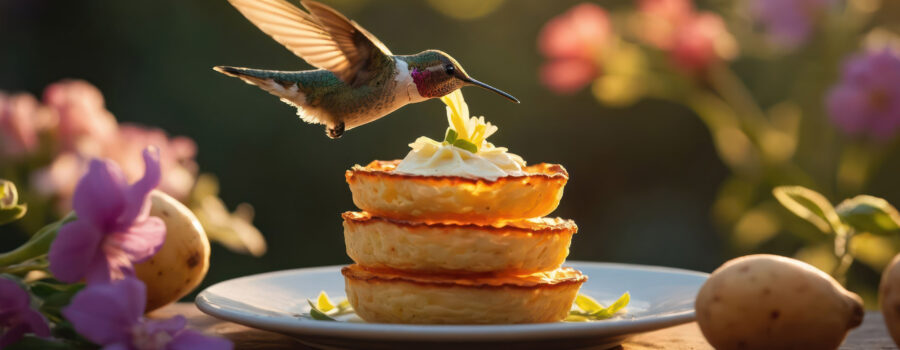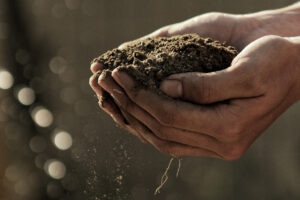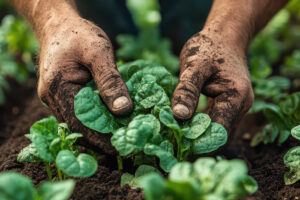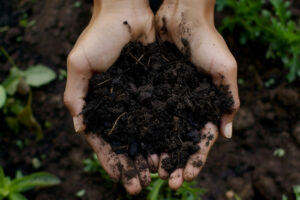The summer solstice, the longest day of the year, holds deep meaning for many cultures around the world. It’s the moment when the sun reaches its northernmost point from the equator — the peak of sunlight, and the first day of summer. In permaculture, where timing, observation, and natural patterns are foundational, the summer solstice offers a powerful moment to pause, reflect, and act in alignment with the rhythms of the Earth.
To me, a solstice is a fresh cycle, a new beginning. Here in Florida, where seasonal changes are more subtle than they are up north, and summers can seem brutally long and hot, I appreciate that even though there are two scorching months ahead that my garden and I must endure, each day will be a bit shorter. But we can also embrace this time for its abundance of light and new growth.
Whether you’re tending a patio full of potted plants, a backyard food forest, or a homestead, integrating solstice awareness into your routine can deepen your connection to the earth, align seasonal tasks with this solar turning point, and celebrate the sun’s life-giving energy in your garden.
What Is the Summer Solstice?
The summer solstice occurs around June 20–21 in the Northern Hemisphere and December 21–22 in the Southern Hemisphere. It’s the day when the Earth’s axial tilt is most inclined toward the sun, resulting in the longest period of daylight and the shortest night.
For gardeners, the solstice has long been a symbol of abundance, fertility, and the fullness of life. Various cultures and traditions mark this celestial event as a time of vitality and transition.
For many Florida gardeners, it is a break from gardening (it is simply often too hot), but I focus on perennials and hardy annuals. I love to garden year-round. As I write this, it is still cool out and the sun has just peeked through the trees on our eastern boundary. I am breathing in the rich fragrance of Tulsi tea. Joy!

Why the Summer Solstice Matters in Permaculture
Permaculture encourages us to work with nature’s patterns rather than against them. Solar energy is the foundation of photosynthesis, which fuels all plant life and, ultimately, our food systems. Understanding and designing with the solar calendar helps maximize productivity and ecological balance.
The solstice is more than just a date — it’s a seasonal tipping point:
- Plant growth is at its peak.
- Photosynthesis is most active.
- Pollination is in full swing.
- Insects and wildlife are thriving.
In permaculture systems, especially food forests and polycultures, this is a time of great energy exchange. Leaves stretch toward the sun, fruits begin to swell, and soil microbiology reaches its summer crescendo.
Seasonal Tasks for the Solstice in a Permaculture Garden
As a high-energy moment in the yearly cycle, the summer solstice is an ideal time to perform specific gardening and design tasks. Here’s how we can align our summer solstice activities with permaculture principles:
1. Observe and Assess
Permaculture begins with observation. The solstice can be a time to take stock:
- What’s growing well?
- Where are the gaps in my system?
- Are there pest or soil issues?
Take a solstice walk through your site and note patterns, successes, and challenges. This is especially valuable for long-term design refinement.

2. Harvest and Preserve
This is a moment of great abundance:
- Harvest what you find
- Begin drying herbs like basil, mint, and oregano
- Start preserving with solar dehydrators or fermentation
Preserving the season’s bounty aligns with the permaculture ethic of care for the future.
3. Mulch and Water Wisely
As temperatures rise, it’s essential to:
- Add mulch to retain moisture and suppress weeds
- Water early in the morning or evening to prevent evaporation
- Monitor plants for signs of stress, and use shade cloths if necessary
This aligns with the permaculture principle of catch and store energy — in this case, soil moisture.
4. Seed for Fall Crops (Depending on Region)
In hot climates like Florida, the summer solstice can be a planning time for fall plantings:
- Start seeds for fall indoors or in shaded beds
- Prepare new beds for the rainy season
- Propagate perennials like comfrey or sweet potato vines
This is part of producing no waste by keeping the garden in constant productive rotation.
5. Compost and Cycle Nutrients
Peak warmth accelerates decomposition:
- Add high-carbon “browns” like straw or shredded paper
- Use chopped weeds and bolted crops as compost ingredients
- Brew compost tea or apply biofertilizers
Summer composting boosts soil for the next cycle, embodying the use and value of renewable resources.

Solar Design and the Permaculture Landscape
Permaculture design is intimately tied to the sun:
- Sun maps help you understand seasonal shifts in light and shade.
- Passive solar buildings can be aligned or shaded based on solstice shadows.
- Solar dehydrators, ovens, and panels are most effective during this peak solar period.
- Sun traps and thermal mass structures help store energy.
At the solstice, take time to check how solar energy is functioning across your site. Where are sun-loving plants thriving? Where might you install shade structures, trellises, or reflective surfaces?

Celebrating the Solstice in Your Garden
Permaculture isn’t just about food production — it’s also about culture. Celebration is part of the People Care ethic. Honoring the solstice can deepen our connection to the land, and enrich personal reflection.
Here are a few solstice traditions that anyone can integrate into a celebration of summer:
1. Sunrise or Sunset Gathering
Mark the longest day with a quiet sunrise meditation or a sunset al fresco dinner in your garden. Invite friends or family to share in the gratitude for all your garden provides.
2. Solstice Fire or Candles
Build a small fire or light candles to represent the power of the sun. Reflect on what’s come to fruition in your garden and your life.
3. Make Herbal Bundles or Wreaths
Gather bundles of herbs like rosemary or lavender to dry in the sun. These can be burned later for their amazing fragrance or used in cooking and teas.
Final Reflections: The Solstice in Permaculture
The summer solstice is nature’s high note — a crescendo of growth, vitality, and sunlight. It’s a mirror for our own lives and projects: what’s flourishing, what needs attention, and where our energy is best directed.
In permaculture, this means:
- Taking time to observe and reflect
- Celebrating abundance while planning for the future
- Honoring the cycles of energy, growth, and rest
Let the first day of summer become a moment of renewal and reflection. It’s a triumph of light over darkness! The Earth is offering us its peak energy — how will we respond?
We can set fresh, new intentions and welcome new gardening opportunities. We can plan and start seeds for our fall gardens, and we can propagate the plants that are abundant in the summer. May your garden be bright, your harvests be plentiful, and your days be long with purpose.
Happy summer solstice, and happy growing!
Copyright © 2025 Fruitful Food Forestry & Lauren Lynch. No portion of the original content on this website may be reproduced, in any language, without express written consent.
Want to express your food forest philosphy?
Check out the Fruitful Shop for fun products…









Leave a Reply
Your email is safe with us.